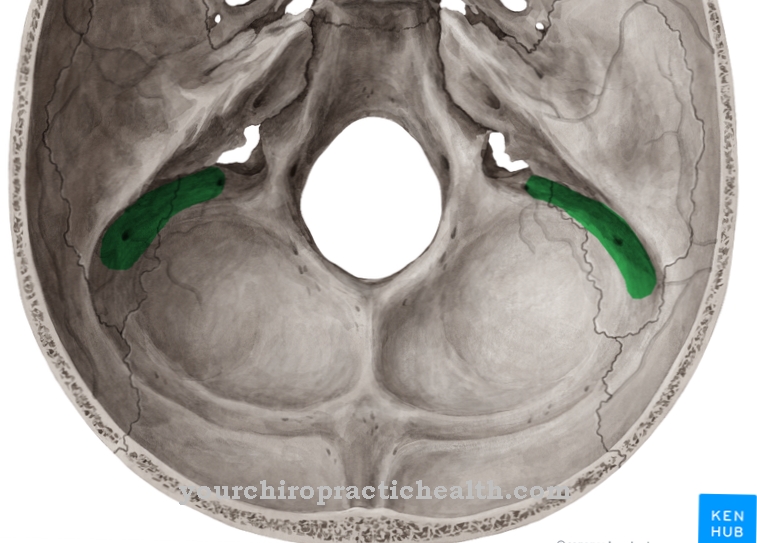Granulosa cells are epithelial cells located in the ovarian follicle and consequently form a unit with the female egg cell. Depending on the stage of maturity of the follicle and the exact location of the cell, they perform different functions, including through the formation of estrogen precursors. The best known disease of the granulosa cell tissue is the granulosa cell tumor, which requires invasive treatment.
What is a granulosa cell?
Epithelial cells are the elements of the glandular and epithelial tissue. The cells are made up of an apical and a basal side. Each epithelial cell is linked to the underlying tissue via the basal side. Epithelial cells are also found in the ovarian follicle.
The ovarian follicle is a unit made up of an egg cell and surrounding follicular epithelial cells, which are also known as granulosa cells. The granulosa cell is therefore a certain type of epithelial cell. There are no granulosa cells outside the ovarian follicle. The name of the cells is derived from the Latin "granum", which literally means "grain". The granulosa cells are therefore also referred to as granule cells in the literature. Granulosa cells play no role in the male organism.
Anatomy & structure
Granulosa cells are located in the multi-layered granule cell layer, the stratum granulosum, of the female ovarian follicle. They develop from follicular epithelial cells through gonadotropins during follicular maturation. Through this process, a primary follicle becomes a secondary follicle. The mature shape of the follicle is called the tertiary follicle.
At this stage, granulosa cells form the inner layer of the follicle wall and become the egg mound to which the egg cell adheres. Granulosa cells release fluid into the follicular cavity. They also surround the egg after the follicle rupture and are then referred to as corona radiata, which is attached to the zona pellucida. Granulosa cells remaining in the ovary are geared towards the storage of lipids in the sense of luteinization. They become the granulosalutein cells of the corpus luteum.
Function & tasks
Granulosa cells fulfill different functions depending on the stage of maturity of the follicle and depending on their exact location. In the mature tertiary follicle, for example, granulosa cells form the inner layer of the wall area and grow together to form an egg mound (Cumulus oophorus). The egg mound later plays an important role in attaching the egg cell. Granulosa cells also perform gland-like tasks. They are responsible for secreting a fluid that later fills the follicular cavity.
In addition to these functions, granulosa cells form a solid layer around the egg cell after the follicle has ruptured. They form a shell and are also known as corona radiata in this connection. In the form of the corona radiata, the cells of the egg cell, or more precisely the zona pellucida, lie against the outside. Not all granulosa cells leave the ovary. The cells remaining in the ovary do their job by storing lipids. This storage is also referred to as luteinization in the medical literature. In the course of the luteinization the remaining granulosa cells become granulosalutein cells.
This variant of the cells later forms the corpus luteum or corpus luteum. In addition to these tasks, granulosa cells also take on functions in the context of hormone production. In this context, the cells are involved in the formation of estrogens. For this purpose, catalysis takes place in the granulosa cells, which turns aromatase into a precursor of hormones. Since granulosa cells are a necessary component of the ovarian follicle and make up the follicle together with the egg cell and the connective tissue layers, they play the most important role in ovulation.
Ovulation is understood to be the dissolution of an egg cell from the female ovary, including the subsequent absorption into the fallopian tube. In the middle of a woman's cycle, ovulation occurs month after month. The maturation of the ovarian follicle is regulated by the follicle-stimulating hormone and takes place in several stages. The primary follicle stage is followed by the secondary and tertiary follicle stages. The Graafian follicle stage corresponds to the final stage of follicular maturation. When the ovarian follicle has matured to full maturity, ovulation occurs.
You can find your medication here
➔ Medicines against skin redness and eczemaDiseases
The most well-known disease of the granulosa cells is the granulosa cell tumor. These types of tumors are ovarian tumors that have a relatively low malignant potency. Granulosa cell tumors are among the mesenchymal or hormone-forming ovarian tumors and occur mainly between 45 and 55 years of age. Of all ovarian tumors, only two percent are granulosa cell tumors.
A distinction is made between juvenile and adult granulosa cell tumors as histological types of tumors. Juvenile granulosa cell tumors sometimes occur in infants or children. Since the tumors, like all other tumors, correspond to a mass, unspecific complaints arise from conduction symptoms. This can be a feeling of pressure or fullness. Constipation or an increasing waistline can also be symptomatic. Larger masses of the granulosa tissue can cause a twisting of the stem, which can lead to an acute abdomen.
Since these are hormone-forming tumors, there is increased estrogen formation in around a quarter of all cases. This increased formation of estrogens can lead to glandular-cystic or adenomatous hyperplasia in the area of the endometrium. Intermenstrual bleeding is a possible symptom at this stage. Young girls often develop pseudo-puberty praecox as part of their appearance.
In the worst case, endometrial carcinoma develops from the granulosa cell tumor under permanent estrogen stimulation. Surgical interventions to resect the tumor are available for therapy for patients with granulosa cell tumors. The affected ovary is usually removed during the procedure. Advanced tumors are usually countered with chemotherapy.













.jpg)

.jpg)
.jpg)











.jpg)